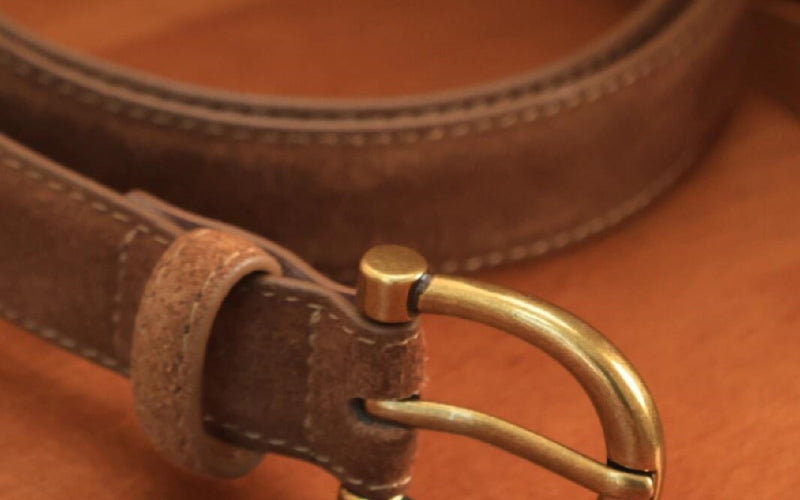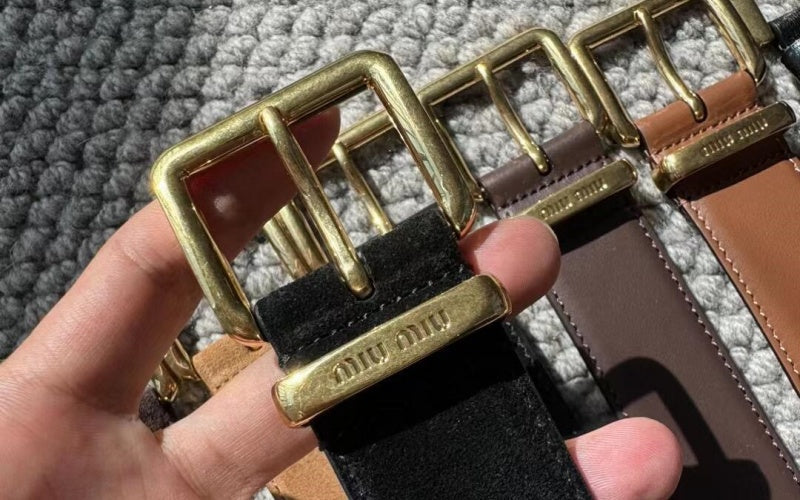
Is Suede or Leather More Expensive? (The Answer Might Surprise You)
Let’s talk about the two heavyweight champions of the accessory world: suede and leather.
One’s the rugged, timeless badass; the other’s the soft, velvety charmer. But when it comes to price, which one’ll leave your wallet gasping for air? Spoiler: It’s not as straightforward as you think.
Think of it like comparing a Tesla to a vintage Mustang. Both are cool, but their costs depend on what’s under the hood.
Grab a snack (or a stiff drink), and let’s dissect why suede might cost more than leather… or vice versa. (Spoiler #2: Exotic leathers could buy you a used car.)

Suede vs. Leather 101 – What’s the Difference?
Suede: The underdog (literally). Made from the underside of animal hides (usually cow, lamb, or goat). It’s fuzzy, matte, and has the texture of a well-loved teddy bear.
-
Pros: Luxuriously soft, casual-cool vibe.
-
Cons: Stains if you sneeze near it, high-maintenance.
Leather: The OG flex. Made from the top layer of hides. Smooth, polished, and smells like a luxury car interior.
-
Pros: Durable, ages like George Clooney, low-maintenance.
-
Cons: Can be pricey (especially full-grain).
Key Takeaway: Suede is leather’s softer, needier sibling.

The Price Breakdown – Why Your Bank Account Might Weep
Let’s cut to the chase. Here’s what you’ll pay in the U.S. for a high-quality belt:
-
Suede: $50–$150
-
Leather: $80–$500+
Wait, Why the Wild Range?
-
Leather Grades:
-
Full-Grain Leather (the Bentley): $150–$500+
-
Top-Grain Leather (the Toyota Camry): $80–$200
-
Genuine Leather (the 2003 Honda Civic): $30–$100
-
Suede Grades:
-
Lambskin Suede (silky smooth): $100–$200
-
Cowhide Suede (durable but rustic): $50–$120
Exotic Exception: Crocodile leather belts can hit $1,000+. (Yes, really.)

Why Leather Usually Costs More (But Not Always)
1. Durability = Long-Term Value
Leather belts last decades. Suede? Maybe 5 years before it looks like it survived a food fight.
2. Production Complexity
-
Leather: Tanning, dyeing, and polishing take weeks.
-
Suede: Split from the hide, buffed, and dyed. Fewer steps, lower cost.
3. The “Luxury” Tax
Designers markup leather goods because prestige. A Hermès leather belt costs $700. The same brand’s suede version? $450.
4. Exotic Leathers
Ostrich, alligator, and python leathers are 3–10x pricier than suede. Because, well, ostriches.

When Suede Costs More (Plot Twist!)
1. High-End Suede
Designer suede (e.g., Gucci, Prada) can outprice mid-tier leather. A $400 suede belt isn’t uncommon.
2. Lambskin Suede
Softer than a cloud and pricier than cowhide. Think $150–$300.
3. Colored Suede
Vibrant dyes (hot pink, cobalt) require specialist treatments. Cha-ching!

The Hidden Costs – Maintenance & Longevity
Leather:
-
Upfront Cost: Higher.
-
Maintenance: Occasional conditioning ($10/year).
-
Lifespan: 10–20+ years.
Suede:
-
Upfront Cost: Lower.
-
Maintenance: Monthly brushing, $20 protector sprays, prayers to the stain gods.
-
Lifespan: 3–7 years.
Net-Net: Leather is cheaper per wear over time.

Material Matters – Full-Grain vs. Suede
Full-Grain Leather:
-
What It Is: The untouched top layer of hide.
-
Why It’s Pricey: Retains natural scars and grains. Develops a patina.
-
Cost: $150–$500+
Suede:
-
What It Is: The split underside of the hide.
-
Why It’s Cheaper: Less durable, mass-produced.
-
Cost: $50–$200
Verdict: Full-grain leather costs more upfront but pays off.

Exotic Leathers – Where Prices Go Bonkers
1. Alligator/Crocodile: $500–$2,000
-
Why: Rare, labor-intensive farming, and Jurassic Park vibes.
2. Ostrich: $400–$1,500
-
Why: Distinct quill follicles. Also, ostriches are mean.
3. Python: $300–$1,000
-
Why: Shed skins are ethically sourced (but controversial).
Suede? Doesn’t compete here. Even the priciest suede taps out at $300.
The Sustainability Factor – Eco-Costs
Leather:
-
Environmental Impact: High (chemical tanning, water use).
-
Ethical Brands: Use veg-tanned, chrome-free leather (+20% cost).
Suede:
-
Environmental Impact: Similar to leather, but shorter lifespan = more waste.
-
Ethical Brands: Rare. Most suede is a byproduct of meat industry.
Verdict: Both have baggage. Opt for eco-conscious brands (like Beltley!) to ease guilt.

How to Choose – Suede or Leather?
Pick Suede If…
-
You’re a trendsetter who loves texture.
-
You’ll baby it like a newborn.
-
You want a lower upfront cost.
Pick Leather If…
-
You’re a “buy it for life” person.
-
You spill coffee daily.
-
You crave timeless luxury.
Beltley’s Hot Takes – Why Full-Grain Leather Wins
At Beltley, we’re team leather—but not just any leather. Here’s why full-grain reigns supreme:
-
Ages Better Than Your Spotify Playlist: Develops a rich patina.
-
Built Like a Tank: Survives weddings, hikes, and diaper changes.
-
Ethical & Eco: Our hides are veg-tanned and sourced responsibly.
FAQs – Answering the Qs You’re Too Shy to Ask
Q: Is suede vegan?
A: Nope. Vegan “suede” is synthetic (and often costs less).
Q: Can I make suede last longer?
A: Avoid rain, invest in a suede kit, and sacrifice a sock to the laundry gods.
Q: Why is my $50 leather belt cracking?
A: It’s probably “genuine leather” (aka the cardboard of the leather world).
Q: What’s the best belt for travel?
A: Leather. Suede + airplane germs = sad times.
Final Thoughts: The Price Tag Isn’t Everything
So, is suede or leather more expensive? Leather usually wins, but suede has its luxe moments. The real question: What’s worth it to you? If you want a belt that’ll stick around longer than your gym membership, go full-grain leather. If you’re a trend chaser with stain-free habits, suede’s your jam.
Ready to invest in a belt that’ll outlive your next 3 phones? Shop Beltley’s full-grain leather collection here. Your future self will thank you.
P.S. Imagine this: Years from now, you’ll pull out that buttery leather belt, weathered and loved, and think, “Worth every penny.” Suede? It’ll be a distant memory… probably in a landfill.

